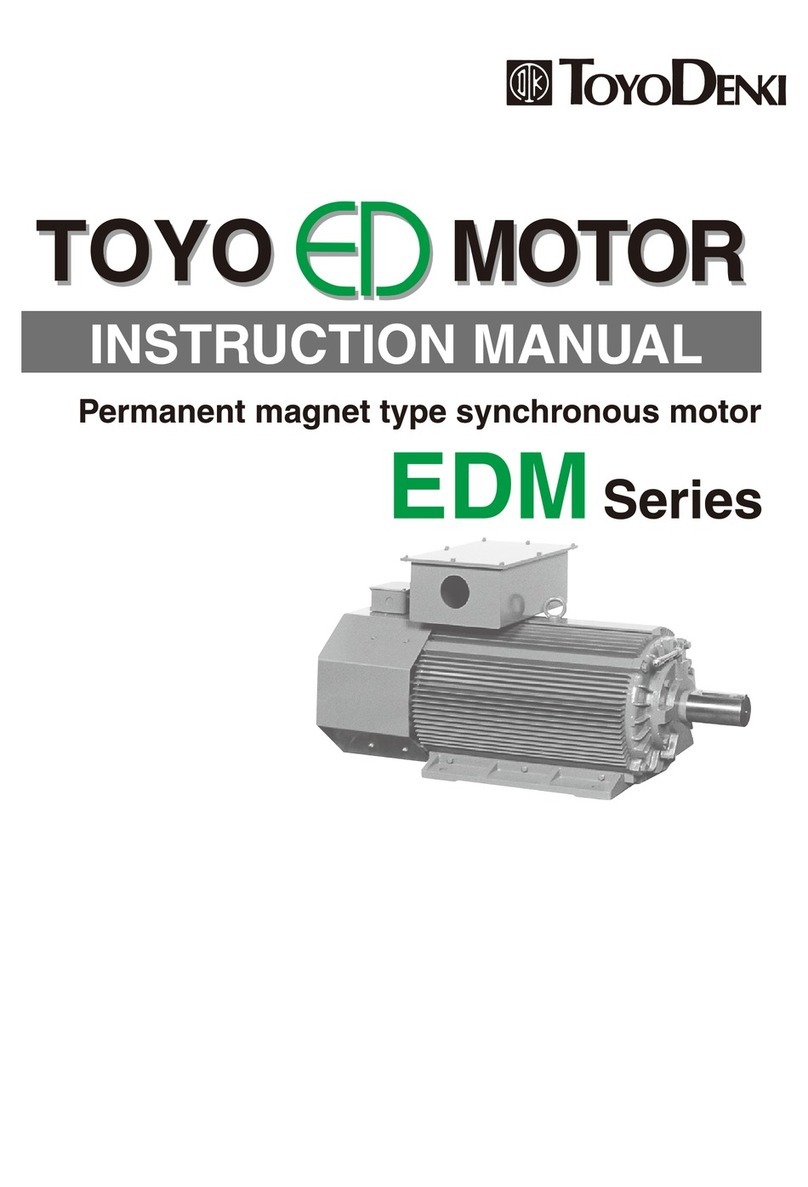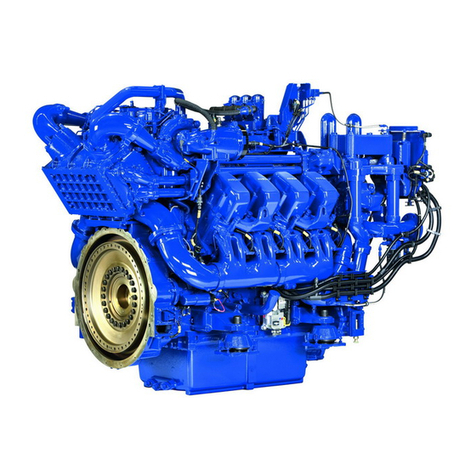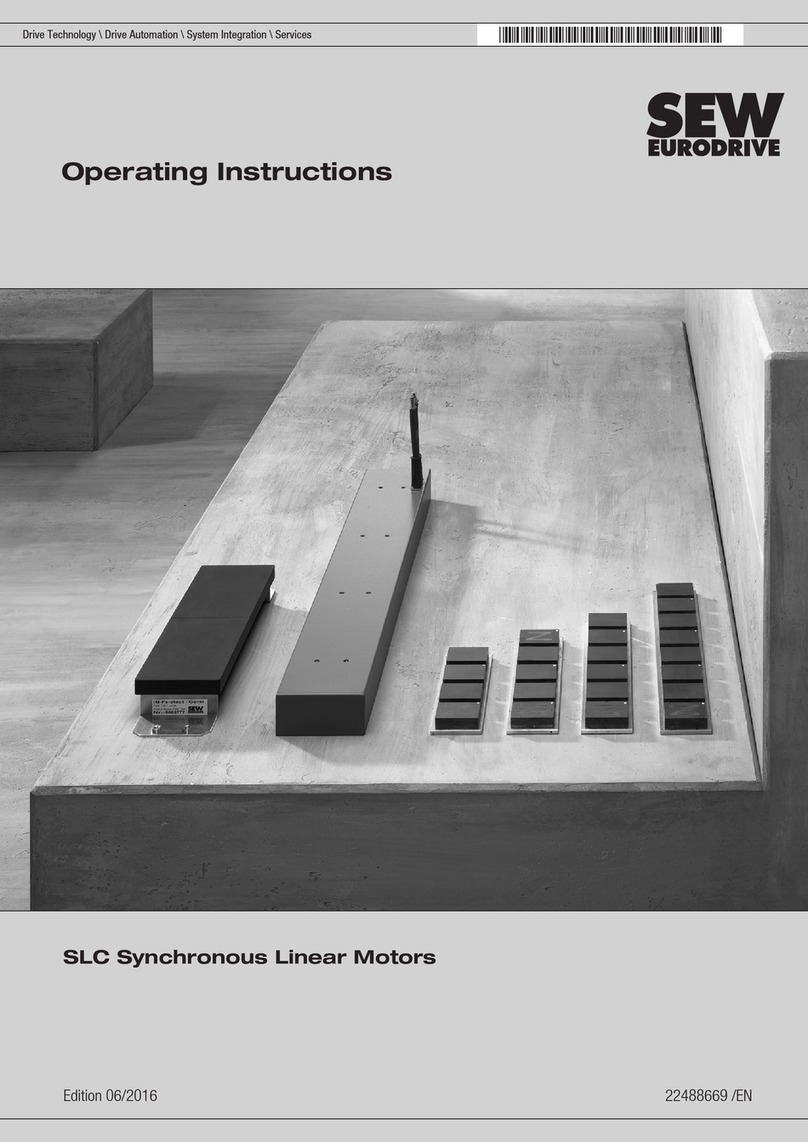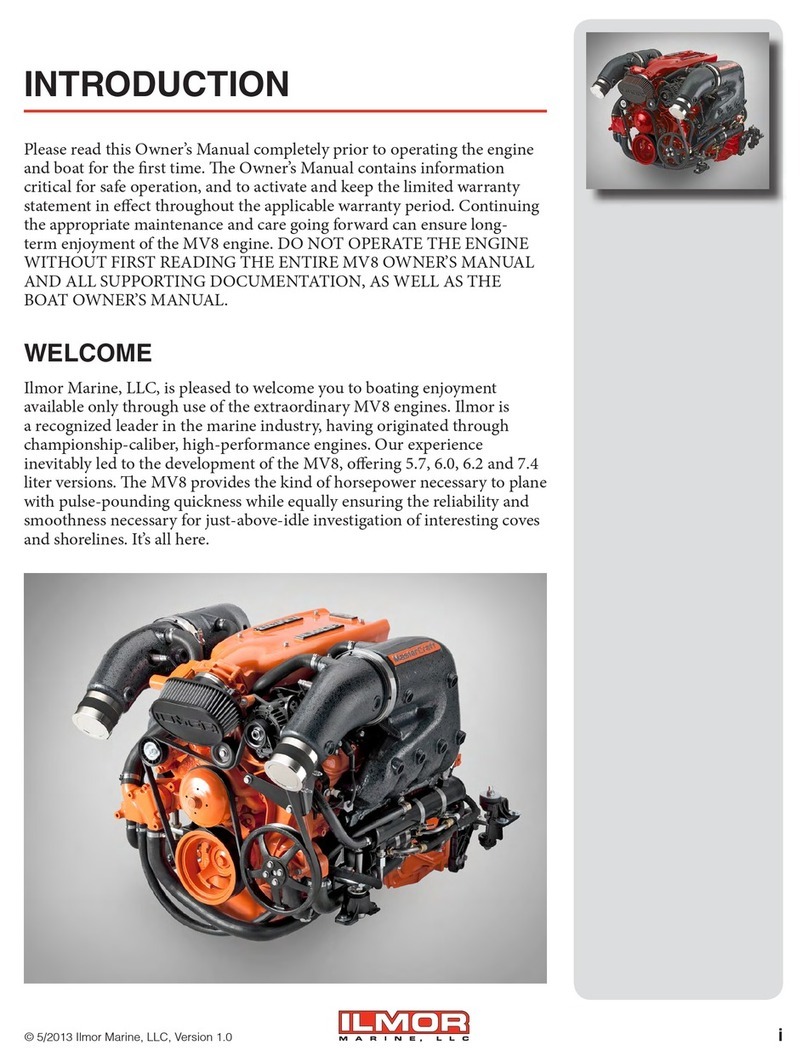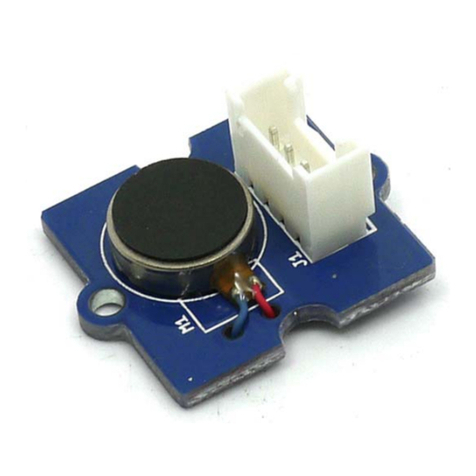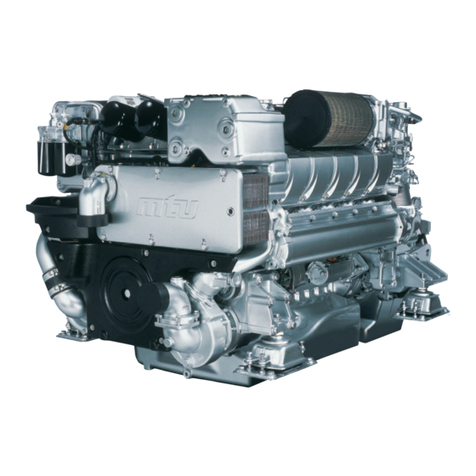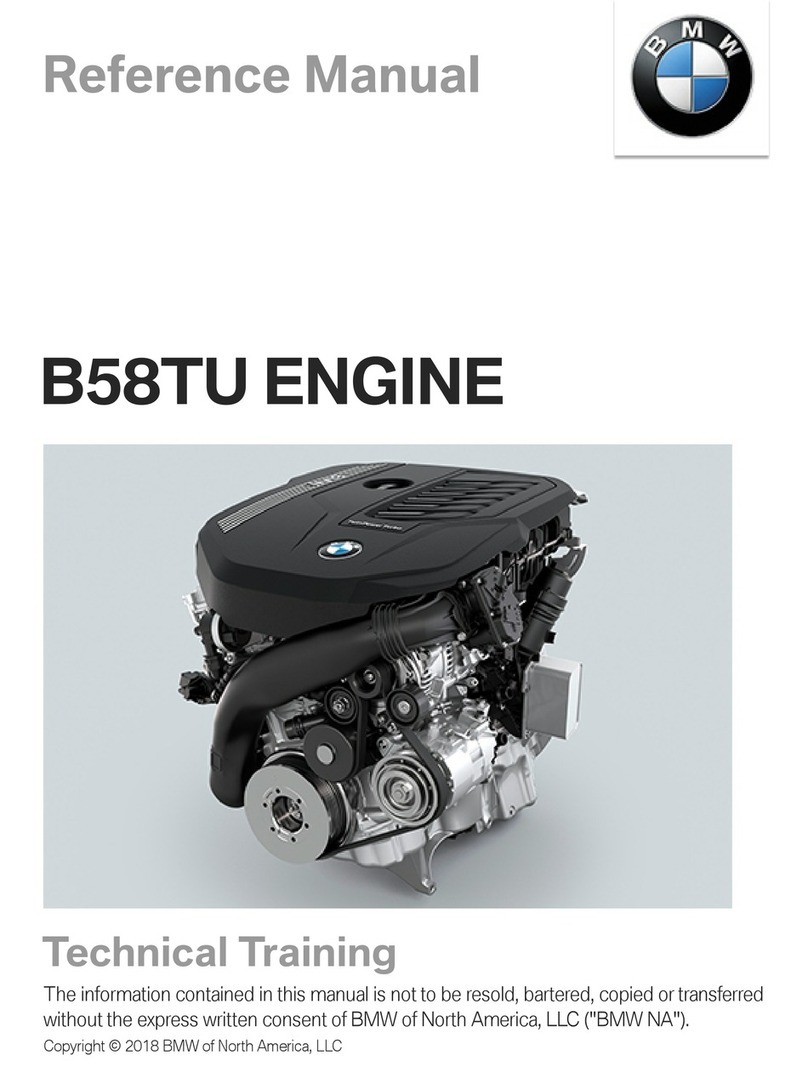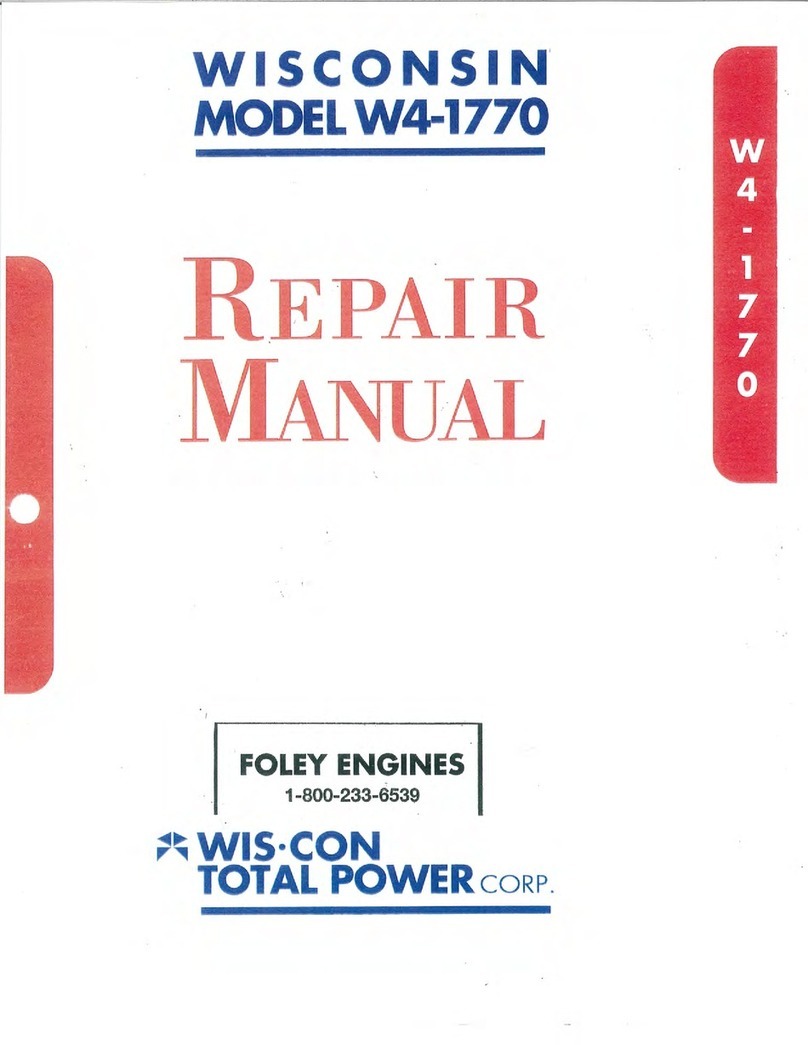TOYODenki EDM series User manual

INSTRUCTION MANUAL
Permanent magnet type synchronous motor
Series


CONTENTS
Please read surely the following precautions
I. Preparation for operation -------------------------------------------------------------------------------1
1. Checking at arrival of motor -------------------------------------------------------------------------------1
2. Installation -------------------------------------------------------------------------------------------------------1
3. Electric wiring -------------------------------------------------------------------------------------------5
II. Trial operation and ordinary operation -------------------------------------------------------------------7
1. Before powering -------------------------------------------------------------------------------------------7
2. After powering -------------------------------------------------------------------------------------------7
III. Maintenance, checking -------------------------------------------------------------------------------8
1. Daily checking -------------------------------------------------------------------------------------------8
2. Periodical checking -------------------------------------------------------------------------------------------8
3. Bearing and lubrication -------------------------------------------------------------------------------8
4. Checking of accessories ------------------------------------------------------------------------------10
5. Service life of main accessory parts ------------------------------------------------------------------10
IV. Preparation for operation ------------------------------------------------------------------------------11
1. Storage ------------------------------------------------------------------------------------------------------11
V. Disassembly, Assembly ------------------------------------------------------------------------------12
1. Procedures of disassembly and assembly ------------------------------------------------------12
2. Replacement of bearing ------------------------------------------------------------------------------16
3. Structural drawing of motor ------------------------------------------------------------------------------17
VI. Troubleshooting of motor ------------------------------------------------------------------------------19
VII. Industrial Product Warranty ------------------------------------------------------------------21

Please read surely the following precautions
Introduction
We thank you for your adoption of Toyo Denki ED Motor (permanent magnet type synchronous
motor). This Manual shows handling method of ED motor and precautions on use for customers
having general knowledge on permanent magnet type synchronous motor. Before use, please
read this Manual carefully until getting of enough knowledge on our ED motor and use it when
it is in optimum condition. After reading, please keep this Manual close to the place where ED
motor is used. In case of lease or transfer of ED motor, deliver this Manual together. When ED
motor is used combining with machine or equipment, please arrange this Manual to be handed
to the end user surely. If this Manual is lost or damaged, please order new one from us or our
distributor. Meanwhile there is a possibility that we change parts of ED motor for the purpose
of improvement of quality/performance or for safety. At such time, there may be a case that a
part of content and illustration, etc. of this Manual does not conform to the original parts, for
which please understand. If there are any points which are unclear, please consult us or our
distributor.
Safety precautions
Before works of installation, operation, maintenance, inspection, etc., please read carefully this
Manual and the manual of Inverter equipment (VF66B, etc.) and all of other attached documents
surely for correct use. Please use ED motor after getting enough knowledge on it as well as
information on safety and all precautions. After reading, keep this Manual close to the place
where operator can read it easily at anytime. In this Manual, ranking of safety precautions is
classified to [Danger] and [Caution].
! Danger : In case of error in operation, dangerous situation may occur and it could result
in death or serious injury.
! Caution : In case of error in operation, dangerous situation may occur and it could result
in medium or light injury, or damage to physical property only.
Even in case of above ! Caution , there is a possibility to lead to serious result depending on
the situation.
Since important contents are written in both safety precautions, make sure to observe them.
! Danger
(General)
・Works of transportation, installation, piping, wiring, operation, maintenance, inspection
must be carried out by qualified expert. Otherwise, that could result in electric shock, injury,
fire, etc.
・Avoid the work in state of hot-line. Be sure to work after breaking of power supply.
Otherwise, that could result in electric shock.
・Even in state that power supply is interrupted, voltage is generated at motor terminal while
motor is running. Do not touch the motor until perfect stop of rotor and also avoid the work.
Otherwise, that could result in electric shock and injury.
・In state that the power supply is interrupted, do not apply the motor to the usage which has
a possibility of being rotated faster than motor rating speed by the load. Otherwise, that could
result in burning and fire.
・Never use the motor in explosive atmosphere. Otherwise, that could result in injury, fire, etc.
(Installation)
・Surely ground the terminal for earthing. That could result in electric shock.
・In case of use of motor fitting on the ceiling or on the wall, it may drop depending on the
conditions. Therefore, please obey to catalog and technical materials in regard to the details
of range of use. Otherwise, that could result in injury.
・Operate the motor after confirmation that protection devices are firmly connected and they
activate normally. Otherwise, that could result in injury and fire.

! Danger
・Do not operate the motor in state that the cover of terminal box is removed. After work, fit
the cover of terminal box at the original position. Otherwise, that could result in electric
shock.
(Piping, wiring)
・Connection with power supply cable should be done in accordance with connection diagram
or Instruction Manual. Erroneous wiring could result in electric shock and fire.
・Do not bend or pull or put between something the power supply cable and lead wire of motor
forcibly. Otherwise, that could result in electric shock.
(Operation)
・Never approach to or contact the rotating objects (shaft, etc.) during operation. Otherwise,
that could result in injury by being caught.
・When power is interrupted, turn off the power supply surely. Otherwise, that could result in
injury when power is supplied again.
(Maintenance and inspection)
・Connection with power supply cable should be done in accordance with connection diagram
or Instruction Manual. Erroneous connection could result in electric shock and fire.
! Caution
(General)
・For installation place of motor, secure safe and adequate space for maintenance and
inspection. Otherwise, trouble of electric shock and injury could occur.
・Do not use the motor under out of specifications of that motor. Otherwise, that could result in
electric shock, injury, breakage, etc.
・Do not insert finger or object into the aperture of motor. Otherwise, that could result in
electric shock, injury, fire, etc.
・Do not use damaged motor. Otherwise, that could result in injury, fire, etc.
・In case of work at high place, prepare enough measures for prevention of drop. Otherwise,
trouble of injury by drop could occur.
・Since remodeling by user is out of range of our guarantee, we are not responsible for it.
・Do not put obstacles in front of motor name plate in order for operator to see it at any time.
・Do not remove the name plate.
(Transportation)
・Since drop and falling down of the product during transportation is dangerous, please pay
enough attention for such work. As to motor, surely use designated position for hanging. After
installation of motor combined with machine, do not hang whole set of motor-machine at the
position for hanging of motor only. Before hanging, confirm mass of motor by name plate,
packing case, outline drawing, catalog, etc. and do not hang the heavier motor than the rated
load of hanger. Breakage of hanger and consequent drop as well as falling down could result
in breakage of motor and injury.
(Unpacking)
・Unpack the case after confirmation of top and bottom. Otherwise, that could result in injury.
・Confirm whether reached product is just the ordered one. Installation of erroneously
delivered product could result in injury, breakage, etc.
(Installation, adjustment)
・Never place any inflammable objects around the motor. Otherwise, that could result in fire.
・Do not place any objects which prevent ventilation, around the motor. Otherwise, that could
result in burn and fire by extraordinary overheat caused by prevention of cooling
・When motor is connected with machine, pay attention on centering, belt-setting, parallel
degree of pulley, etc. In case of series connection, pay attention on direct-connection accuracy.
In case of belt connection, adjust tensile strength of belt correctly. Before operation, tighten
clamp bolts of pulley and coupling firmly. Otherwise, trouble of injury and breakage of
equipment caused by scattering of fragments could occur.
・Avoiding touch with rotating part, mount the cover, etc. Otherwise, that could result in
injury.

! Caution
・In case of rotating of motor alone, remove temporarily fixed key to the main shaft.
Otherwise, that could result in injury.
・Before connection of motor with machine, confirm its direction of rotation. Otherwise, that
could result in injury and breakage of equipment.
・Never get on and dangle from motor. Otherwise, that could result in injury.
・Do not touch with bare hand the keyway at shaft end of motor. Otherwise, that could result
in injury.
(Piping, wiring)
・At the time of measurement of insulation resistance, do not touch the terminals. Otherwise,
that could result in electric shock.
・Carry out wiring work in accordance with [Electrical Facilities Technical Standards] and
[Inner Wiring Regulations]. Otherwise, that could result in fire.
(Operation)
・Since motor gets very hot during operation, do not touch it with hand or body. Otherwise,
that could result in burn.
・When error occurred, stop operation immediately. Otherwise, that could result in electric
shock, injury, fire, etc.
(Maintenance, inspection)
・At the time of measurement of insulation resistance, do not touch the terminal. Otherwise,
that could result in electric shock.
・At the time of injection/discharge of grease to/from bearing, do not touch rotating object.
Otherwise, that could result in injury.
・Since frame of motor gets very hot, pay attention at the time of maintenance and inspection
in order to avoid burn.
(Repair, disassembly)
・Repair and disassembly should be done by qualified expert. Otherwise, electric shock,
injury, fire, etc. could occur.
EDM Series ED motor is the most suitably designed motor for Inverter
drive by Toyo Denki having high level technology in rotary machine and
control equipment.
Explanation of type name
EDM 1 9 1 1 V - C 1 A A - H 0 1
Main mechanical variation on
external form
Details of protection system or
cooling system
Electrical specifications
Cooling system
Installation structure of motor
Frame spigot diameter
Series number
Fig. 1

- 1 -
I. Preparation for operation
1. Checking at arrival of motor
When the ordered motor arrived, please check paying attention to the following points.
(1) Check the motor with our invoice separately sent.
(2) Check the motor for damage, rusting, dropping of accessories, etc.
(3) There is a case that the rotor of motor is fixed in order to prevent the bearing from being
damaged during transportation. Check the rotor and remove it.
(4) Rotate the shaft end manually to confirm smooth rotation.
(5) Check the motor output, voltage, current, frequency, rotation speed, etc. shown on the name
plate.
Photo. of external appearance of motor
2. Installation
2.1 Installation place
(1) Install the motor at a well-ventilated place and arrange not to return the coming out heat from
the motor, to the intake side by circulation. At a place where the ambient temperature is high or
when the motor is influenced by heat radiation/conduction, take measures such as heat
insulation, reduction of load, etc.
(2) Distance between the inlet of cooling fan of the motor and the wall should be 20cm or more for
EDM13~EDM31 and 30cm or more for EDM35~EDM68.
(3) Place with less humidity.
(4) Place with less dust. If dust is accumulated on the fins of frame, cooling effect will be reduced
causing overheating. Therefore, periodical cleaning should be done in case of dusty place.
(5) Place where motor is not influenced by noxious gas and acid/alkaline chemicals, etc. When
motor is used at a place where flammable gas exists, re-check whether selected explosion proof
structure conforms to the regulations of Ministry of Economy, Trade and Industry and the
Ministry of Health, Labor and Welfare.
(6) Place where such works as disassembly, inspection, cleaning and maintenance can be carried
out easily.
(7) Install the motor on a strong foundation and rigid common base so that external vibration will
not be conducted to the motor. If vibration during operation is large, bearing life will be
shortened and it will cause the vibration fatigue failure of fan, rotor, etc.
(8) Place with less fluctuation of supply voltage and less voltage drop.
Connector for pulse oscillator
Fram
e
Main
terminal box
Shaft
Bracket
Fan cover
Auxiliary terminal box
(for cooling fan)

- 2 -
2.2 Connection with counterpart machine
(1) Foundation work
In order to minimize the vibration and misalignment during operation, strong foundation is
required. If foundation is incomplete, machine will vibrate and bearing life will be shortened,
to which please pay attention. The most ideal foundation in order to prevent generation of
vibration is a strong concrete foundation but
if such concrete foundation cannot be made
because of counterpart machine and
relation with the place, install the motor on
the steel frame with bolts firmly arranging
that the motor shaft exactly level (or
perpendicular for a vertical motor) surely.
For the base, achieve the level degree of
0.2/1000mm or less accurately. Also, clean
the surfaces of concrete foundation / steel
frame and of the leg of motor for ideal
installation.
(2) In case of flexible coupling
1) Mark the matchmarks on the outer
surface of coupling.
2) In order to rotate the couplings together,
connect couplings of the counterpart
machine and of the motor by one bolt.
3) Fix a dial gauge firmly to outer surface of one coupling. (Fig. 2)
4) Move the matchmark of the coupling to the top and measure the dimension-g by clearance
gauge and dimension-h by dial gauge.
5) Rotate the coupling and carry out same measurement as above item 4) at every 90 of
quadrant positions.
6) Adjust using shim plates so that the difference between maximum and minimum of the
measured values will be 0.03mm for both g and h. Every time the measurement for
adjustment is carried out, tighten the installation part with bolt sufficiently. When dial
gauge cannot be fitted for a small motor, apply the stretch to the outer surface of one
coupling and measure the clearance between stretch and the other coupling.
Stretch
Fig. 2
h : Parallelism
g : Eccentricity
Matchmark

- 3 -
(3) In case of belt drive
Set the counterpart machine shaft and motor
shaft accurately parallel and apply the belt in
such a way that both pulley centers coincide each
other.
The belt is apt to be stretched too much however,
excessive stretching will damage the bearing and
cause unexpected accidents such as breakage of
motor shaft, etc., to which please pay attention.
1) Belt stretching method
Step 1 : Firstly, find the belt span (Ls). Belt span
is the length of the portion of belt
between contact points with both pulleys.
Step 2 : Apply the force ( Pk ), which is required
for deflection ( δ), at the center of the
belt span. This required force for
deflection ( δ) should be calculated by
the formula 5 shown below and it should
be within the range of Pk1 - Pk2.
Step 3 : Stretch the belt in such a way that the
deflection ( δ), when the force is applied,
will be the value found by the following
formula.
δ= 0.016・Ls
2) Calculation formula
Step 1 : How to find belt contact angle (small pulley side) ... Formula 1
Formula 1
θ = 180° -2 sin-1
Step 2 : How to find initial tension (Fo) .................................. Formula 2
Formula 2
Fo = 0.9 { 500 ( ) + m・v2}
Fo : Initial tension (N)
Table 1
Kθ: Contact angle
correction factor
Contact angle (θ)
140°
150°
160°
170°
180°
Pd: Design power (kW)
Correction factor (K
θ)
0.89
0.92
0.95
0.98
1
Pd= PNx ( Ko + Ki ) PN: Load power (motor output, in general) (1kW)
Ko : Load correction factor (1.0 ~1.5)
Ki : Idler correction factor (0 ~0.2)
Z : Number of belt v : Belt speed (m/sec) m : Mass/unit of belt (kg/m)
Note) Determine Ko, Ki depending on the machine to be used and operation time,
referring JIS Standard or catalog, etc. of belt maker.
Step 3 : How to find span (Ls) ................................. Formula 3
Formula 3
Ls : Span (mm)
C : Distance between shafts (mm)
d2: Large pulley nominal diameter
(mm)
d1: Small pulley nominal diameter
(mm)
Z・v
Pd
d2-d1
2C
Motor
Counterpart
machine
Motor side
pulley
θ(Belt cont-
act angle)
Fig. 3 Belt stretching method
2.5 –Kθ
Kθ
Ls = C2-
(d2-d1)2
4

- 4 -
Step 4 : How to find deflection (δ) ........................... Formula 4
Formula 4 δ= 0.016・Ls δ: Deflection (mm)
Step 5 : How to find necessary force (Pk1, Pk2) for deflection (δ) ... Formula 5
Formula 5
Pk1 : Necessary force (min. value)
(N) for deflection (δ)
Pk2 : Necessary force (max. value)
(N) for deflection (δ)
Table 2
Kind of belt
Y(N)
m(kg/m)
Standard V belt
A type
15
0.12
B type
20
0.20
C type
30
0.36
D type
60
0.66
Narrow V belt
3Vtype
20
0.08
5Vtype
39
0.20
8Vtype
98
0.50
Table 3
Type of motor
EDM
1711
EDM
1721
EDM
19
EDM
22
EDM
27
EDM
31
EDM
35
EDM
43
Permissible shaft load F(N)
1600
2240
2930
5360
9080
12100
18800
24200
Q (mm)
80
110
110
110
140
140
170
175
Q' (mm)
31.5
41
50.5
68
93.5
106
91.3
108.8
[Note] Type of motor, for which the belt can be applied, is till EDM4321V. EDM4331V and
EDM54, EDM68 are for direct connection only.
Belt speed should be : -
Standard V belt (A, B, C, D types) ..... 30m/sec or
less
Narrow V belt (3V, 5V, 8V types) ....... 40m/sec or
less
This matter should be taken into consideration when
pulley diameter is determined. The belt tension differs
depending on the kind of belt however, the radial load
imposed on the motor shaft should be less than the values in the above table.
(4) Mounting of coupling and belt pulley
Coupling and belt pulley should be mounted carefully not to damage the motor bearing.
Lightly press-fit them by wooden or plastic hammer. In case of heating, heat them until about
100°C uniformly. In case of press-fitting, remove the rust preventive agent on the shaft end by
petroleum solvent or alkali solvent, and apply molybdenum disulfide.
[Caution]
In case that the pulse oscillator for speed detection is provided on the shaft end of non-
transmission side, be careful not to give impact to it when coupling and belt pulley are
inserted since it may be damaged by such impact. (See Structural Drawings Fig.17~Fig.20)
(5) In case of flange type motor flange engagement surface is accurately machined. If
contaminant, paint, rust, etc. are found there, remove them surely.
Pk1(min.value) =
Fo + Y
16
Pk2(max.value) =
1.25 x Fo + Y
16

- 5 -
3. Electric Wiring
3.1 Terminal box
There are main terminal box for motor main body terminals and thermistor, and auxiliary
terminal box for electric fan. Connect external wirings correctly and firmly. Connection with
pulse oscillator of motor side is connector-connection.
3.2 Connection diagram
Fig. 5 shows the standard connection diagram. In case that the temperature sensing element
(pt100Ω), temperature element (bimetal type) and electromagnetic brake are provided, all these
terminals are housed in the main terminal box and their terminal symbols are as shown in Fig.
6.
[Caution]
If electromagnetic brake and main power supply circuit are connected erroneously with terminals
of ptc thermistor (terminals MG1, MG2), temperature sensing element (terminals T1, T2, T3) and
temperature element (XB1, XB2), motor coil will be damaged caused by breakage of elements and
so, enough attention should be paid. Also, do not measure insulation resistance by insulation
resistance meter (Megger). If the power was turned on with wrong connection, carry out
disassembly and inspection.
Note : Cooling fan is single phase for EDM19 or less.
Therefore, it has 2 terminals of FU and FV.
Main terminal
Auxiliary terminal box
ptc thermistor
Main terminal
Temperature
element
Temperature
sensing element
Ele. mag brake
Fig. 6
Fig. 5
Cooling fan
oscillator

- 6 -
3.3 Direction of rotation
(1) Direction of rotation must be correct.
(2) Direction of rotation of the motor is expressed as seen from the shaft end of drive side.
Standard direction of rotation of the motor is counterclockwise (CCW) in case that the phase
sequence of power supply side is R, S, T and when these phases are connected with the motor
terminal symbols U, V, W.
3.4 Checking of wiring
(1) Terminals must be connected correctly in accordance with connection diagrams (Fig. 5, Fig. 6).
Due attention should be paid to the following points.
1) For the signal cable between pulse oscillator (PG) and controller, the twisted pair, shielded
cable should be used for protection against noise. The length should be 100m or less. Also,
connection with pulse oscillator of motor side is connector connection and therefore,
undermentioned straight plug and cable clamp are needed in addition to the cable.
Recommendable cable ...Twisted pair, shielded cable ... CO-SPEV-SB(A)7P-0.5SQ
(product of Hitachi Metals, Ltd.)
Straight plug ... MS3106B-20-29S
(product of Japan Aviation Electronics Industry, Limited or equivalent)
Cable clamp ... MS3057-12A
(product of Japan Aviation Electronics Industry, Limited or equivalent)
2) As to the shielded cable (N), ground that of the motor side only.
3) Never carry out the measurement of insulation resistance (Megger test) of pulse oscillator.
Use tester for this measurement.
4) For the wiring cable of ptc thermistor, use twisted pair cable.
5) The earthing terminal (E mark terminal) provided in the main terminal box must be
grounded. The earthing terminal (E mark terminal) is provided also in the auxiliary terminal
box for cooling fan. Please ground it surely.
(2) Checking of the direction of rotation of electric fan
After finish of wiring work, check that the electric fan for cooling rotates to the correct direction,
before starting of normal operation. (direction of rotation and cooling air flow are indicated on
the fan cover.)
3.5 Detailed drawings of terminal boxes
Main terminal box (Fig. 7) and cooling fan terminal box (Fig. 8) are terminal block type.
However, for the motors EDM43 or over, main terminal box is lug type.
In case of single phase, terminal
symbols are FU and FV.
Fig. 7 Detailed drawing of
main terminal box
Fig. 8 Detailed drawing of
cooling fan terminal box
ptc thermistor lead wire
primary lead wire
earth terminal
symbol
earth terminal
symbol

- 7 -
II. Trial operation and ordinary operation
1. Before powering
All of your purchased motors from us passed severe tests at our factory however, they may have a
possibility of being damaged during transportation or affected by long storage, and so carry out
following checking, confirmation before starting of operation.
(1) Precautions for working before trial operation
1) Check that the shaft fixer and cover for the time of storage were removed.
2) Check whether electric wiring was correctly carried out and terminal box cover was fitted.
3) Check whether loose tightening bolts are found at individual part.
4) Check whether the motor is well ventilated.
5) Check whether rotating part contacts fixed part when the shaft is rotated manually.
6) Measurement of insulation resistance of stator coil to earth. Disconnect the motor main
circuit at the terminal block of the controller side and measure insulation resistance using
500V Megger between motor terminal and earth. Although it is difficult to generally indicate
the insulation resistance value, criterion is 1MΩ or over.
7) Check whether earth terminals of individual part are completely connected.
(2) Lubrication
For the grease lubrication type motors, the bearing portion is filled with grease before
shipment. However, if they are not used for more than 6 months after arrival at the site, the
grease must be replenished soon after starting of operation. This work is not necessary in case
of use of sealed-grease type bearing.
(3) Others
Check the status of direct connection and belt tension as well as tightening of bolts and nuts of
the individual part.
2. After powering
(1) In the initial operation, the motor should be operated with no load independently at as low as
possible speed in order to confirm no abnormality. After that, the motor should be connected
with the counterpart machine.
(2) After starting of operation, check the following points.
1) Whether direction of rotation (standard direction of rotation is clockwise as seen from non-
load side) is correct.
2) Whether abnormal sound is heard from the bearing part.
3) Whether abnormal sound is heard from inside of the motor.
4) Whether burning smell of insulator, etc. is sensed.
5) Whether abnormal vibration is sensed. If the total amplitude exceeds 30μm, investigate the
cause and take necessary measures.
6) Whether supply voltage and phase current are balanced.
7) Whether starting time is abnormally long.
Checking the above points, proceed independent operation, no-load operation, full-load operation
sequentially and if all of them are normal, start full scale operation.

- 8 -
III. Maintenance, checking
In order to prevent accidents in operation of the machine, daily monitoring or checking is required.
1. Daily checking
By touching and hearing, check the vibration and sound at the time of starting and during operation
of the machine and confirm that there is no abnormality. User is recommended to put the status of
operation on record.
Records of daily checking :-
(1) Date, time of measurement. Weather of the day of measurement
(2) Voltage, load current, frequency, rotation speed
(3) Ambient temperature
(4) Temperature of stator winding or frame
(5) Temperature and sound of bearing
(6) Abnormal vibration
(7) Cooling air condition of cooling fan
2. Periodical checking
(1) Measurement of insulation resistance
(2) Checking of bearing related items
(3) Condition of ventilation
(4) Measurement of vibration
(5) Looseness of tightening nuts
(6) Condition of direct connection of coupling and belt tension
(7) Cleaning of individual part
(8) Checking of power supply condition
(9) Checking of pulse oscillator, cooling fan
Checking items are as shown above. The insulation resistance should be measured every 6 months
and the other items should be checked once a year.
To measure and monitor the machine vibration periodically is very important for the
maintenance/checking of the machine. If vibration is large, it affects the bearing, winding and
condition of direct-connection badly and therefore, investigate the cause and repair the faulty part.
3. Bearing and lubrication
3.1 Shielded bearing
For the motors of EDM13~EDM22 and EDM27~EDM35 (non-load side), shielded type ZZ (non-
contact type sealed grease) bearing is used. Generally, the bearing should be replaced at the time
of periodical checking. Until that time, grease maintenance is not required.

- 9 -
3.2 Grease replenish type bearing
For the motors of EDM43 or over, kind, quantity and interval of replenishing of grease are indicated
on the name plate.
(1) Replenish the grease during operation at every replenishment interval (operation time)
indicated on the name plate. In case that the net operation time is short due to short-time or
repetitive operation, grease should be replenished in such a way that the elapsed time including
stoppage will not become twice or more of the interval indicated on the name plate, or at least
every 6 months - one year.
(2) When grease is replenished, be sure to rotate (300 r/min or more) the motor, clean the grease
nipple, and replenish necessary quantity by grease gun through the nipple. At every time of
grease replenishment, scrape out old grease from grease drain port.
(3) When the grease is replenished, bearing sound will become temporarily louder a little or the
bearing temperature will rise 5°C~10°C higher than the normal one, because of excess grease,
but it will return to normal one in several hours to 1 day.
(4) Table 4 shows approximate values of grease replenishment quantity and replenishing timing.
Table 4 Grease replenishment quantity
Type of
motor
Load side bearing No.
Replenishment
quantity
Replenishing timing (cumulative
operating time) (Hr) at specified speed
Non-load side
bearing No
(g)
1800 r/min
1500 r/min
1200 r/min
EDM2761V
EDM2771V
NU313
33
3400
4200
5400
6312ZZ
--
--
--
--
EDM2772V
EDM2781V
NU316
47
3000
3700
4800
6312ZZ
--
--
--
--
EDM3141V
NU316
47
3000
3700
4800
6315ZZ
--
--
--
--
EDM3151V
EDM3161V
EDM3541V
NU320
72
2600
3200
4200
6315ZZ
--
--
--
--
EDM3551V
EDM3561V
EDM43**V
NU324
102
2300
2900
3700
6318
24
2300
2900
3700
EDM54**V
6324
102
4700
5800
7600
6318
48
4700
5800
7600
EDM68**V
6326
116
4400
5500
7200
6324
96
4400
5500
7200
Table 5
At the forwarding from our factory, bearings are filled
with Multemp SRL (of Kyodo Yushi Co.) unless otherwise
specified, (or grease of the brand specified by user). For
replenishment of grease, we recommend this Multemp
SRL. If grease of this brand is not obtainable, the
equivalent greases shown in the table below can be used.
Maker name
Brand of grease
Kyodo Yushi
Multemp SRL
Nippon Oil
Multi Knock Wide 2
MOBIL
Mobil Temp SHC100
SHELL
Variant M2
ESSO
Templex N2
3.3 Use of grease of different type for the grease replenish type bearing
(1) Avoid mixed use of different brands of grease. Depending on the combination, properties of
grease may greatly change.
(2) In case that the user is compelled to use a grease of different brand from the grease of the time
of delivery, the following method should be taken.
1) Open the grease drain port and inject new grease while scraping out the old grease, during
operation or by manual rotation of the shaft.
2) Repeat this work until the new grease comes out of the grease drain port.
(3) When the grease is injected, bearing temperature may rise. In such a case, stop the injection
until lowering of bearing temperature. After that, repeat the injection of the grease.

- 10 -
3.4 Sound of bearing (Grease replenish type)
Sound of bearing during operation is classified as follows.
(1) Normal sound
The normal sound is continuous one. The race sound, jarring sound and retainer sound are
considered as normal. The jarring sound may be misunderstood as an abnormal noise but it
does not mean the abnormality of bearing. The jarring sound dies away temporarily when the
grease is injected in general.
The jarring sound may be generated in the following cases.
1) In case of bearing clearance C3 or C4 for high speed machine
2) In case of cylindrical roller bearing
3) In case of operation in winter of low ambient temperature and of the beginning of operation
after long stoppage.
(2) Abnormal sound
1) Flaw noise or dust noise, etc. are abnormal sound.
2) Abnormal sound is discontinuous and in some cases it accompanies vibration.
3)When abnormal noise sounds, inject new grease and observe change in sound and
temperature for a while. If abnormal noise does not stop, the bearing should be replaced.
4. Checking of accessories
For checking of accessories of electromagnetic brake, speed reducer, etc., see the Instruction of
Manual for accessories of the separate volume.
5. Service life of main accessory parts
Some parts of motor have their service life limit. It differs depending on the service
environment/conditions and therefore, carry out checking or replacement of parts making the
undermentioned service life limit as a criterion.
5.1 As to motor related parts
(1) Motor bearing (at ambient temperature of 40°C or lower and speed of 1800 r/min)
1) Grease replenish type bearing ..... About 50,000 hours
2) Shielded bearing .................. About 32,000~47,000 hours
・Sealed grease is of Multemp SRL of Kyodo Yushi, or equivalent.
・Life of shielded bearing is determined depending on the life of sealed grease. Life of
sealed grease is affected by the ambient temperature and is shortened about 1/1.5 every
time the ambient temperature rises 10°C from 40°C.
(2) Fan motor .......... About 3~4 years (at ambient temperature of 40°C or lower)
(3) Pulse oscillator ... About 4~5 years (at ambient temperature of 40°C or lower and speed of
1800 r/min)
(The shielded bearings of fan motor and pulse generator will reach the limit of their service life.
This limit differs depending on the ambient temperature.)
(4) V ring .................... About 25,000 hours
(It is recommended to also replace the V-ring when the encoder is replaced.)
5.2 Helical speed reducer (at ambient temperature of 40°C)
(1) Each bearing ....... About 25,000 hours
(2) Oil seal .................About 10,000~15,000 hours as a criterion (Life differs greatly depending on
the environmental conditions for use.)
(3) Replacement cycle of lubrication oil
First time : 500~1,000 hours after starting of operation.
Subsequently : Every 2,500 hours.

- 11 -
IV. Storage
1. Storage
(1) In case that the motor is stored for 3 months or longer till the initial operation after receiving
it or its operation is stopped for 3 months or longer, take the following steps.
1) Storage
: The motor should be placed in the same posture with
correct installation state, covered with waterproof sheet,
and be kept at a dry place.
2) Exposed machined surface
: Apply rust-preventive agent every 6 months. If motor is
export-packed, unpack it after elapse of one year and apply
the rust-preventive agent.
3) Rotation of shaft
: Operate the motor for a few minutes every 3 months (and
before long storage) or rotate the shaft manually about 10
times. If motor is export-packed, follow item 4) below.
4) Bearing and lubrication
・Shielded bearing
: After storage of motor for 2 years or longer, pay attention
whether abnormal sound is heard from bearing during trial
operation. If it is heard, replace the bearing.
・Grease replenishment type
: Replenish the quantity shown on the name plate, rotating
the shaft manually or operating the motor every one year.
(If the motor is export-packed, unpack it temporarily and
replenish the grease.)
5) Insulation resistance of
winding
: In case that the motor is not used for a long time, measure
the insulation resistance of winding of the winding every 6
months and before starting of operation. If resistance is
lower than 1 MΩ at ordinary temperature and its cause is
not the moisture adsorption in the terminal box, dry the
winding.
6) Space heater
(when provided)
: When the motor is stopped for 1 day or longer, energize the
heater.
7) Surface painting
: Re-paint every 2 years, as the need arises.
8) Drain plug
(when provided)
: Open the drain plug periodically (at least every 6 months)
and before starting of operation.

- 12 -
V. Disassembly, Assembly
This motor incorporates permanent magnet in its rotor. Owing to this composition, pulling out of
the rotor from the stator is quite difficult. Therefore, do not pull out the rotor from the stator at the
time of disassembly/assembly of motor, such a case of replacement, etc. of bearing. Replacement of
bearing can be carried out keeping the rotor inserted in the stator. Also, at the time of
disassembly/assembly, do not proceed the work at load side and non-load side simultaneously.
Surely after completion of work of one side, start the work of the other side (As to the order of work,
starting from any of both side is available). Since magnetism of the magnet of rotor acts to outside
a little during the works of disassembly/assembly of motor, do not make Watch, Magnetic Card, etc.
approach to the motor.
1. Disassembly/assembly procedures
(See Fig. 9 below and structural sectioned drawings (Fig. 17~Fig. 20)
(1) Break the power supply.
(2) Remove the connection with the load.
(3) Remove all the external wirings connected with the terminals in the terminal box.
(4) Remove the connection part of pulse oscillator output cable connector at upper part of fan cover.
1.1 Non-load side
(1) Remove pulse oscillator output cable connector from fan cover.
(2) Remove fitting bolts of fan cover and remove fan cover. At this time, cooling fan installed at fan
cover is also removed in combined state with fan cover.
(3) Remove fitting screws of pulse oscillator cover and remove pulse oscillator cover. At this time,
pulse oscillator output cable is led from lower part of pulse oscillator and therefore, pay attention
not to be pulled this cable.
(4) Remove screws, which fix the plate spring of pulse oscillator stator to the mount of pulse
oscillator.
Fig. 9 Detailed drawing of non-load side pulse oscillator and bearing part
position cross section
of motor shaft (See
[Note] of P15 )
Position of plate spring
fitting screw
Pulse oscillator output cable
Detail of A-A
Set screw (M4-2
positions)
(applied with
screw lock for
loosening-stop)
Pulse oscillator output cable connector
Non-load side
bearing
Fan cover
Frame
Non-load side bracket
Inner cover of
non-load side
bearing
Plate
spring
Pulse oscillator mount
Pulse oscillator cover
Pulse oscillator
Motor shaft
C-type snap ring

- 13 -
(5) Loosen about 3 turns the 2 setscrews fixing the pulse oscillator rotor to the motor shaft and
remove pulse oscillator. (Do not take off the setscrews.) However, an adhesive (TB1342H) is used
to prevent the set screws from loosening. Before removing the set screws forcibly, warm them up
to about 100°C using a thin soldering iron and then remove them.
(6) Remove the fixing screws of the pulse oscillator mount, and remove that mount. When the mount
is removed, mark the matchmarks. (For EDM22~EDM68, it is unnecessary to remove the pulse
oscillator mount.)
(7) Remove the V-ring. Refer to Fig. 10 for motors with
encoder only (EDM3551V and EDM3561V, EDM43 to
EDM68), and motors with encoder and electromagnetic
brake. At that time refer to Table 6 for the V-ring type
on the non-load side.
Remove the V ring.
(8) In case that the electromagnetic brake is provided,
remove it.
(9) Remove the bearing outer cover of non-load side
(since the cover of EDM35 or less is unified type with
bracket, remove the fixing bolts of the bearing inner
cover). When that outer cover is removed, mark the
matchmarks.
(10) Remove the bracket of non-load side. When it is
removed, mark the matchmarks.
(11) Remove the insulated short shaft (this shaft is attached to EDM31 or over and not attached to
EDM27 or less, of which shaft is unified type with motor shaft.) of non-load side shaft end. When
that short shaft is removed, mark the matchmarks.
(12) Remove the C-type snap ring by the pliers. (EDM35 or less)
Remove the bearing nut, bearing washer and outer slinger. (EDM43 or over)
(13) Pull out the bearing from shaft by the puller. (As to the details of replacement work of bearing,
refer to item V-2.)
(14) After completion of replacement work of bearing, carry out assembly work under reversed
procedure of disassembly. Align the matchmarks marked at the time of disassembly and tighten
the bolts of diagonal positions alternately in order to avoid uneven tightening. Also, apply grease
(Three Bond 1805 spray type) to the lip of the V ring. The shaft runout for mounting the encoder
should be 0.05 mm or less at TIR. The measurement method of shaft runout is according to Fig.11.
At that time, use a non-magnetic dial gauge. If the dial gauge is not nonmagnetic, it may not be
possible to measure shaft runout correctly.
[Note]
T.I.R.(Total Indicator Reading) refers to the total amount of dial gauge reading when the
measurement unit is rotated once around the reference axis.
Oscillator
mounting base
Oscillator
V ring
Apply grease to lip at reassembly
Fig.10 Position of V ring at
non-load side

- 14 -
The shaft runout correction method is as follows.
(a) If the encoder mounting shaft is integral with the
motor shaft (Refer to Fig.12 (a)), adjust by tapping the
shaft end with a plastic hammer (Less than 2LB) and
a rod of soft material that does not damage the shaft.
(For example, Duracon) Be careful as the impact may
cause an abnormality if the shaft is subjected to an
extremely strong impact.
(b) If the encoder mounting shaft is fixed to the motor
shaft with bolts (Refer to Fig.12 (b)), loosen its bolts
and adjust the mounting position. Be careful not to
forget to tighten the bolt tightly at the end.
(15) After assembling, rotate the shaft manually to
confirm smooth rotation.
Table 6 V ring type on the non-load side (Only motors with an oscillator)
Type of motor
Type of break
Type of V ring
EDM1311V~EDM3541V
None
None
EDM3551V~EDM6851V
V-40A
All types
MNB-5K
V-28A
MNB-10K
V-28A
MNB-20K
V-32A
MNB-40K
V-45A
SNB-1.2K
V-18A
SNB-2.5K-13
V-22A
SNB-6KB-03
V-28A
SNB-12KB-03
V-28A
SNB-25KB-03
V-32A
SNB-45KB-03
V-40A or V-38A
Plastic hammer
Rod
Tap the shaft
to adjust.
(a)Oscillator shaft integrated
with motor shaft
(b)Oscillator shaft mounted
with bolts to motor shaft
Bolts for mounting
encoder shaft
Motor shaft
Oscillator
shaft
shaft
Loosen bolts and
adjust the oscillator
shaft position.
Fig.12 Shaft runout correction method
Non-magnetic
type dial gauge
Measure a point 1 to 3 mm
away from the chamfer
Fig.11 Runout measurement of
oscillator mounting shaft
Other manuals for EDM series
1
This manual suits for next models
18
Table of contents
Other TOYODenki Engine manuals
Popular Engine manuals by other brands
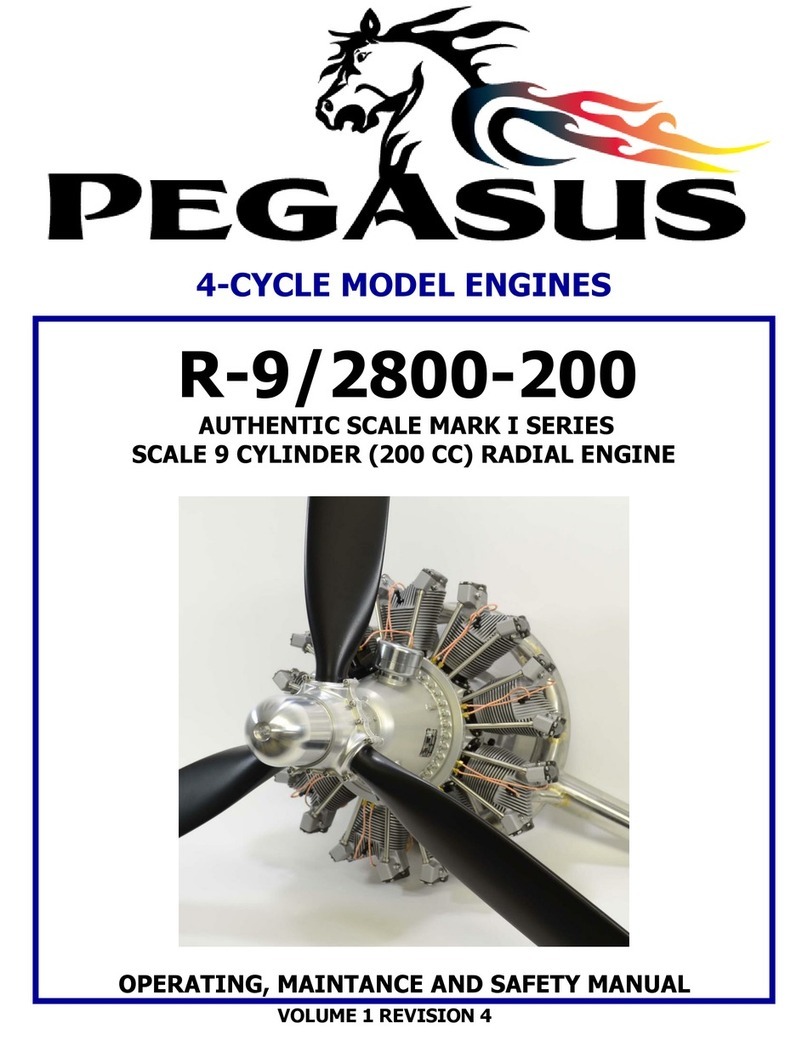
Pegasus
Pegasus R-9/2800-200 operating, maintance and safety manual
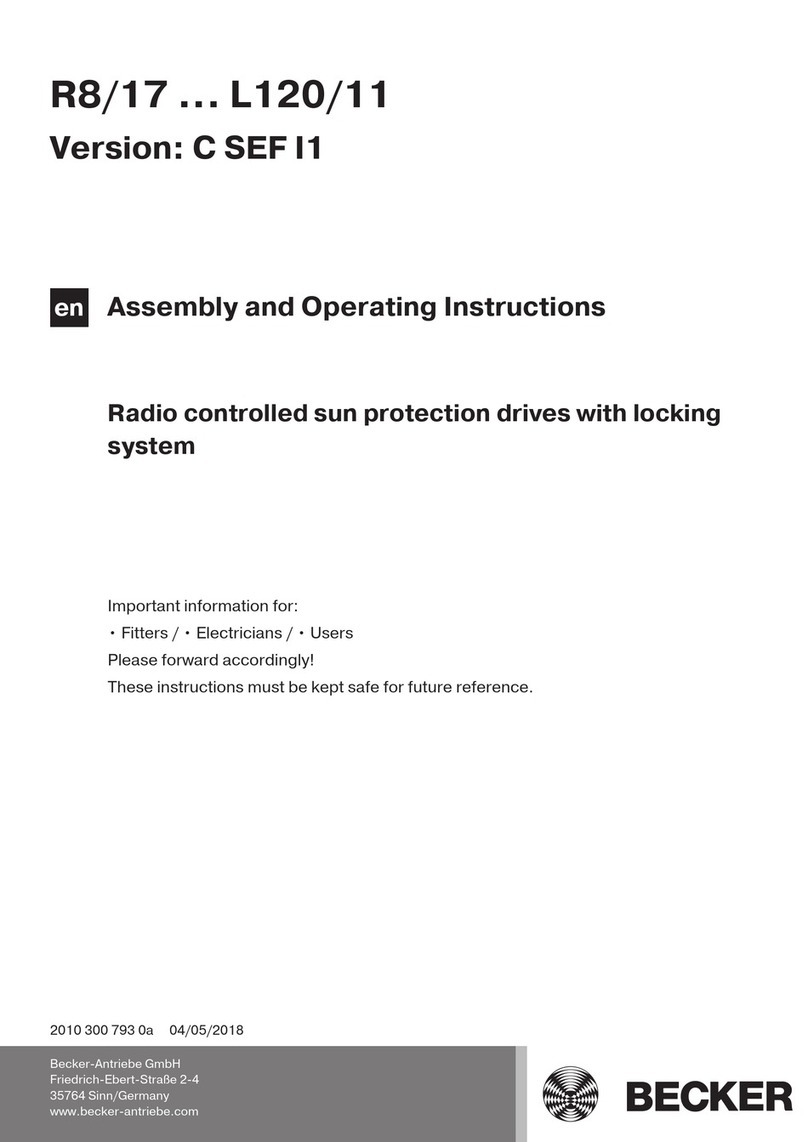
Becker
Becker R8/17C SEF I1 Assembly and operating instructions

MVVS
MVVS 45 - V1.1 ASSEMBLY EXHAUSTS 3207S-3208S manual

White
White RE 540 Series Repair instructions
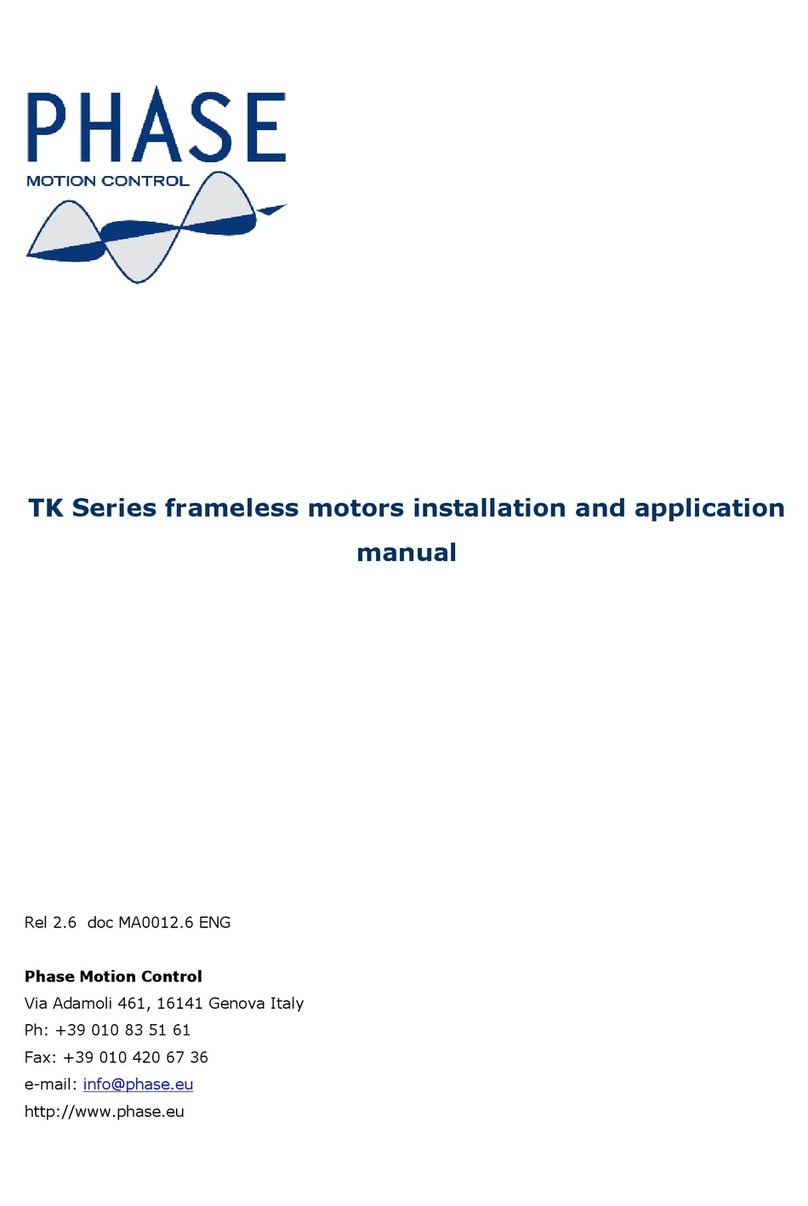
Phase
Phase TK Series Installation and application manual
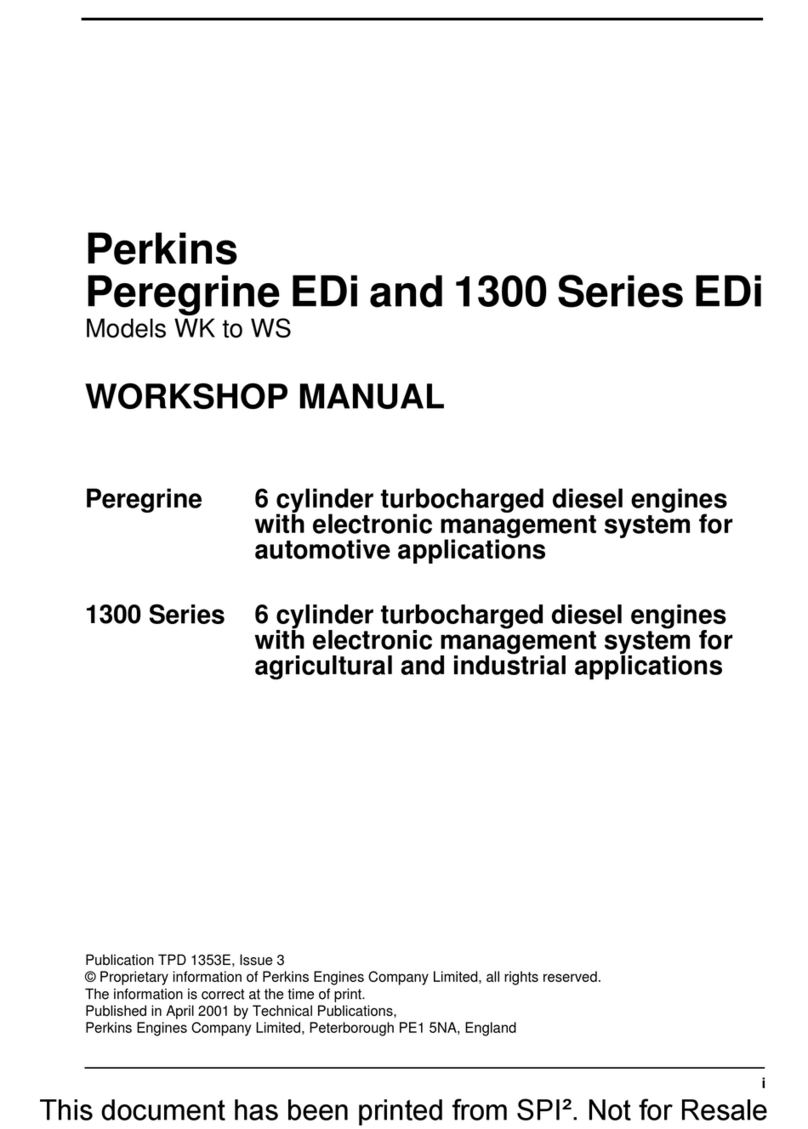
Perkins
Perkins 1300 EDi Series Workshop manual
